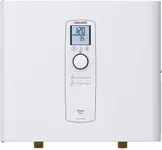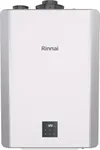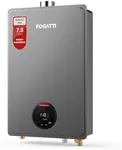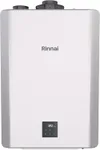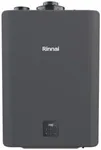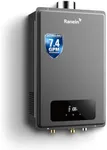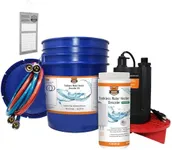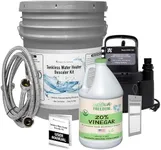Buying Guide for the Best Tankless Water Heaters
Choosing a tankless water heater can be a smart way to ensure you have hot water on demand without taking up much space or worrying about running out. Unlike traditional heaters with storage tanks, tankless models heat water only when it's needed, making them energy-efficient and generally more durable over time. To find the best fit for your household, it's essential to understand the main specifications and features, as these will directly affect your experience and satisfaction.Flow Rate (Gallons Per Minute - GPM)Flow rate measures how much hot water the unit can provide at once, typically shown in gallons per minute (GPM). This is important because if the flow rate is too low, you might struggle to use hot water in multiple places at the same time (like a shower and kitchen sink). Lower GPM units (around 2-4 GPM) work well for small households or single fixtures, while larger homes or those who need hot water at several points at once should look at higher GPM units (6+ GPM). To pick the right flow rate, add up the GPM of appliances you normally use together at peak times; choose a model that covers your total need.
Temperature RiseTemperature rise tells you how much a heater can increase the water's temperature as it flows through. This matters because the incoming water is colder in some places or during certain seasons. Units are rated based on how much they can heat the water at a given flow rate. If you live in a colder area, or want extra-hot showers, choose a model that can deliver a higher temperature rise at your required flow rate. Manufacturers often provide charts; match your expected flow and local cold water temperature to select the right fit.
Energy Source (Gas vs. Electric)Tankless water heaters can be powered by natural gas, propane, or electricity. Gas models usually provide higher flow rates and can keep up with larger demand, while electric models are often more compact and easier to install in smaller spaces. The choice comes down to what's available in your home and your hot water use. If you need high capacity or already have a gas line, gas may be better. For smaller needs, or if you want a simpler setup, electric could be the way to go.
Installation RequirementsInstallation involves factors like ventilation for gas models, electrical capacity for electric ones, and space for fitting the unit on a wall. Gas models need proper venting to the outside, which can add to the installation steps, while electric heaters often require an upgraded electrical panel. Consider what's easier and feasible in your home; if your installation location can't easily be adapted, that should guide your choice.
Size and DimensionsWhile tankless heaters are much smaller than traditional tanks, they still come in different sizes. Size affects where you can place your unit, especially if you want to install it in a tight spot, like under a sink or in a closet. Measure your available space and make sure the unit you pick will fit comfortably, including space for any necessary maintenance.
Maintenance NeedsTankless units generally need less day-to-day attention than tanks, but they should still be cleaned (descaled) annually, especially if you have hard water. Some models make this easier than others. If you want minimal hassle, look for units with simple maintenance requirements and easy access for servicing. Think about your ability and willingness to keep up with maintenance when making your choice.
